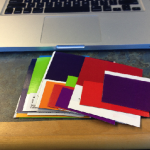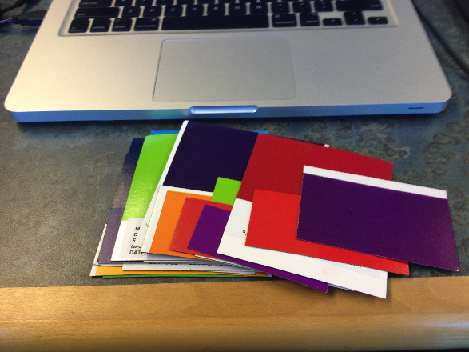

Since color is something you see, you may never have thought of the science behind color. There is, however, plenty of mathematics and applied physics that make the measurement and reporting of accurate color reproduction possible. Here’s how color science is explained on Wikipedia:
Color science history
There is more than one hundred years of color science that provides the underlying knowledge required for ColorMetrix products and services to work and be useful. It began in 1913 when the The International Commission on Illumination (usually abbreviated CIE for its French name, Commission Internationale de L’éclairage) was formed. Without the CIE, it’s possible we would have never determined the definition of a standard observer.
The standard observer
In 1931, the CIE conducted a series of experiments to quantify how the “average human” sees color. That standard observer research is the basis for most of what happens in the verified color business. Without that research, we’d still be depending upon visual assessments of color. The problem with visual assessments is that no two people see color exactly the same way. Even worse, depending upon your age and level of fatigue, you don’t even see color the same in the morning as you do in the evening. For example, middle-aged men and beyond have a more difficult time seeing yellow than their younger peers.
The mathematics of verified color
So we needed a standard observer upon which to base the mathematical calculations of color difference. Armed with a standard observer and color difference math, the most common of which is referred to as “Delta E,” it became possible to subjectively evaluate color reproduced in the manufacturing process.
Sounds simple, right? Actually, it’s gotten more complex over the years. The standard observer model (or color space) has been tweaked and tinkered with many times. The color difference Delta E formulas have been found to be woefully inadequate and have been essentially all but rewritten. This makes it vitally important that you know which color space and Delta E formula is required to conform with your customers’ verified color requirements.
Light
Of course even with an standard observer, it’s impossible to have color until we’ve illuminated the object. Again, the CIE has developed a list of standard illuminants. Knowing how our sample was illuminated is another key piece of information required to accurately calculate color difference. This is because there are inks and other pigments that will behave (appear) differently under various light sources. In sunlight, they will appear to be one color while under florescent bulbs they will appear to be an entirely different color. Since perception is reality, the illumination of our sample color must be taken into consideration as well.
The real world
Armed with the above knowledge and a beta version of some new software we are working on, I headed off to a printing plant to run some tests. The goal was to measure production samples of printed work with two vastly different color measuring instruments (called spectrophotometers) and arrive with approximately the same color difference results.
It sounds like it should have been simple based upon the fact that we had standard observers, illuminants and highly refined color difference math. The problem is that instruments can be manufactured in different ways and, as a result, see color in slightly different ways just as humans do. The problem is further compounded because these slight differences are typically nonlinear. If you remember anything about mathematics, it might be that solving nonlinear equations is not so simple.
All the test measurements were collected and then the respective Delta E values fed into a spreadsheet. Now we’ve reduced a pile of color swatches like those in the picture with this article to a column of “Average Delta Es.” That’s right. Those hundreds of measurements of beautiful colors were reduced to two numbers that matter. Those numbers are the mean and standard deviation of the Delta E measurements between the two instruments after our new software had worked its magic on the process.
Why go to all the trouble?
Those two numbers will provide confidence to brand owners that their colors can be measured with almost any instrument that adheres closely enough to the mathematics and physics of color. While the science of color may be tedious and geeky to the extreme, it must be in order make sure all your favorite brands are the color they should be no matter where or how the color is produced.